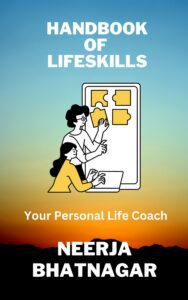More Than Just a Mask
We’ve all worn a mask at work at some point — perhaps an “I’m fine” smile, the always-ready team-player persona, or that perfectly calm exterior when inside you’re reeling. But for many neurodivergent professionals, this mask is not occasional—it’s daily survival.
In modern workplaces, the culture of “fitting in” often means suppressing natural traits, behaviours, and ways of thinking. This is called masking, and for those whose brains work differently — the neurodivergent* — it has become all too common. Today, we’re talking about how that’s changing, and how you and your organisation can lead the shift to authenticity and inclusion.
What Is Masking — Really?
Masking (or camouflaging) refers to the practice of modifying one’s behaviour, speech, or reactions to appear “neurotypical” to blend into professional culture. (theclearcompany.co.uk)
Examples include:
- Forcing eye contact when it feels painful
- Over-preparing for meetings to “sound normal”
- Avoiding stimming behaviours (like tapping or fidgeting) to appear composed
- Suppressing sensory discomfort (bright lights, noise overload) and acting unaffected
While masking may help mask differences in the short term, the constant effort can drain emotional and mental energy. Studies show it’s linked to higher levels of burnout, anxiety and depression for neurodivergent workers. (PMC)
Why the Workplace Is Seeing a Shift
We stand at a moment when more organisations are recognising that neurodiversity is not a problem to fix—but a strength to embrace.
- Over 60 % of neurodivergent employees report that they mask at work. (peoplemanagement.co.uk)
- Research shows that when workers don’t feel they can reveal aspects of themselves, trust in the workplace falls. (Great Place To Work®)
- Inclusive organisations are moving from “accommodate when needed” to “design for all” mindsets—creating spaces where people don’t have to hide who they are. (neurodiversityglobal.com)
For you, the creator, the manager, or the employee — this shift matters. When we allow authenticity instead of “adapt-to-fit,” we unlock creativity, wellbeing, and performance.
From Masking to Un-Masking: Practical Steps
Here’s how individuals and workplaces can move beyond masking and foster neurodivergent inclusion:
For Individuals
- Recognise your energy drain. Do you feel exhausted not by your tasks but by being someone else at work?
- Find your quiet cues. Use what works for you: noise-cancelling headphones, scheduled breaks, alternate communication methods.
- Choose your allies. Have one safe person at work you can brief about your working style. Authenticity needs trust.
- Highlight strengths. Neurodivergent minds often excel in pattern recognition, focused attention, innovation. Let your light shine.
For Organisations
- Train leaders. Ensure managers understand masking, sensory sensitivities, executive-function differences. (neurodiversityglobal.com)
- Design inclusive systems. Structured meetings, clear agendas, flexible work styles—all remove the pressure to mask.
- Promote peer support groups. Safe spaces reduce isolation and encourage genuine participation. (theclearcompany.co.uk)
- Reward health-not-hustle. Recognise that over-functioning often hides masking and can lead to burnout. (neurodiversityglobal.com)
My Take: Authenticity Wins
For years, I believed fitting in meant bending to the mould. But recently I learned: thriving means showing up as you are.
In the world of work, especially today, the greatest advantage isn’t perfect polish—it’s authentic power. When you stop hiding and start being seen, your creativity, your purpose, and your voice become stronger.
To every creator and every team: let’s make our workplaces places where masks can come off—and where everyone works with full presence, full energy, full self.
Quick Recap
- Masking is a hidden burden many neurodivergent workers carry—often unseen yet deeply felt.
- The cost of masking: burnout, disengagement, hidden talent.
- The new frontier: neuro-inclusive workplaces where authenticity is welcomed and strengths celebrated.
- Practical steps exist—for individuals and for organisations—to shift from masking to un-masking.
- When we allow people to be, we unlock a better version of work for everyone.
Further Reading & Resources
If you’d like to explore more about neurodiversity at work and how organisations can move beyond masking culture, here are some insightful resources:
- Book – “Neurodiversity at Work” by Amanda Kirby & Theo Smith
A practical guide for leaders and HR professionals on creating truly inclusive workplaces. - Podcast – “Squarepeg” by Amy Richards
Real stories from autistic and neurodivergent adults about life, work and identity. - Website – Neurodiversity Hub
(👉 neurodiversityhub.org)
Free tools, templates and training resources for employers and educators. - Article – Harvard Business Review: “Neurodiversity as a Competitive Advantage”
A must-read piece on why companies like SAP and Microsoft are redesigning hiring and support systems for neurodivergent talent. - Community – LinkedIn #NeurodiversityAtWork
Join ongoing conversations and find companies actively championing neuro-inclusion.
* (Neurodivergent is a nonmedical term that describes people whose brains develop or work differently for some reason. This means the person has different strengths and struggles from people whose brains develop or work more typically. While some people who are neurodivergent have medical conditions, it also happens to people where a medical condition or diagnosis hasn’t been identified.)
This post is a part of Blogchatter Half Marathon 2025
This is Day 8 of my 15-day series on unusual but trending ideas. Tomorrow, I’ll dive into Digital Product Passports: How Sustainability is Going Smart. Don’t miss it!
You can check my posts for the Blogchatter Half-Marathon 2025 here.
Neerja Bhatnagar
Feel free to connect with me on social media to stay updated on more content like this!
Instagram | Facebook | YouTube |Twitter |Podcast |
I have written 3 solo books and 3 anthologies. You can buy my books on Amazon. If you are on Kindle Unlimited, you can read them for free. Pls, do check and share your reviews.



